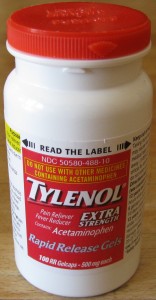“Tone at the top” is a term that originated in the field of accounting and is used to describe an organization’s general ethical climate, as established by its board of directors, audit committee, and senior management. Having a strong tone at the top is believed by business ethics experts to help prevent fraud and other unethical practices. (Wikipedia)
While the term may have originated in the field of accounting, setting a strong “Tone at the Top” is a leadership fundamental, and therefore a high C-Level Priority.
 C-Level executives should be thinking of the tone within their organization as a key part of the company’s culture- well beyond the “general ethical climate”. What C-Level exec’s communicate in word and in action, how they deal with issues in practice, and what gets prioritized and rewarded all dictates an organization’s tone.
C-Level executives should be thinking of the tone within their organization as a key part of the company’s culture- well beyond the “general ethical climate”. What C-Level exec’s communicate in word and in action, how they deal with issues in practice, and what gets prioritized and rewarded all dictates an organization’s tone.
Often times you can walk into a company’s offices and immediately get a sense for the company’s energy level, relationship with its customers, its management style, … all the things that give a company its personality. Companies have a “feel”, a “style” that carries through and characterizes the organization. This all reflects the tone.
In an earlier blog post we discussed Market Focus and used the example of how one troubled technology company did not seem to have the word “customer” in its vocabulary. Shifting to a Market Focus had to start at the top, just as do other key principles. Sometimes creating the tone takes a lot of time and repetition- as it did in shifting to a Market Focus. Other times, it can happen in a flash.
There is a classic example of how one reputable company handled a major issue that set a lasting tone, while at the same time taught us all a lot about them and their culture. This excerpt is taken from my book- The Loyalty Payoff:
Remember the Tylenol scare which occurred in the fall of 1982 when seven people in the Chicago, Illinois, area died after ingesting Extra Strength Tylenol medicine capsules which had been laced with cyanide poison? Immediately upon learning about this horrible situation, Johnson & Johnson Corporation, the manufacturer of Tylenol, distributed warnings to hospitals and distributors and halted Tylenol production and advertising. It issued a nationwide recall of Tylenol products; an estimated 31 million bottles were in circulation, with a retail value of over US$100 million. The company also advertised in the national media for individuals not to consume any products that contained Tylenol. When it was determined that only capsules were tampered with, Johnson & Johnson offered to exchange all Tylenol capsules already purchased by the public for solid tablets.
 While the Tylenol example was an extreme case, contrast that to the manner in which Merck handled the 2004 “Vioxx scare” (the product was alleged to increase the risk of heart attack and stroke in its patients). While Merck ultimately pulled Vioxx from the market, it was only done after a long and involved series of denials. The Merck response did not set the aggressive, patient-welfare tone that J&J’s did 2-decades before. Vioxx was returned to the market after further FDA investigation, but the damage done to Merck’s reputation in the way it handled the issue lingered.
While the Tylenol example was an extreme case, contrast that to the manner in which Merck handled the 2004 “Vioxx scare” (the product was alleged to increase the risk of heart attack and stroke in its patients). While Merck ultimately pulled Vioxx from the market, it was only done after a long and involved series of denials. The Merck response did not set the aggressive, patient-welfare tone that J&J’s did 2-decades before. Vioxx was returned to the market after further FDA investigation, but the damage done to Merck’s reputation in the way it handled the issue lingered.
Senior executives are responsible and accountable for setting the tone within their organization that often determines a company behavior, especially when the chips are down.
Our thanks to the accounting profession for introducing us to the concept, but the tone at the top needs to be thought of well beyond the accounting world and in the everyday running of the business. How the C-Level staff set that tone has a major bearing on a company’s welfare in so many ways.
The best employees look for it, customers look for it, and boards of directors should demand it- clearly a C-Level Priority.

